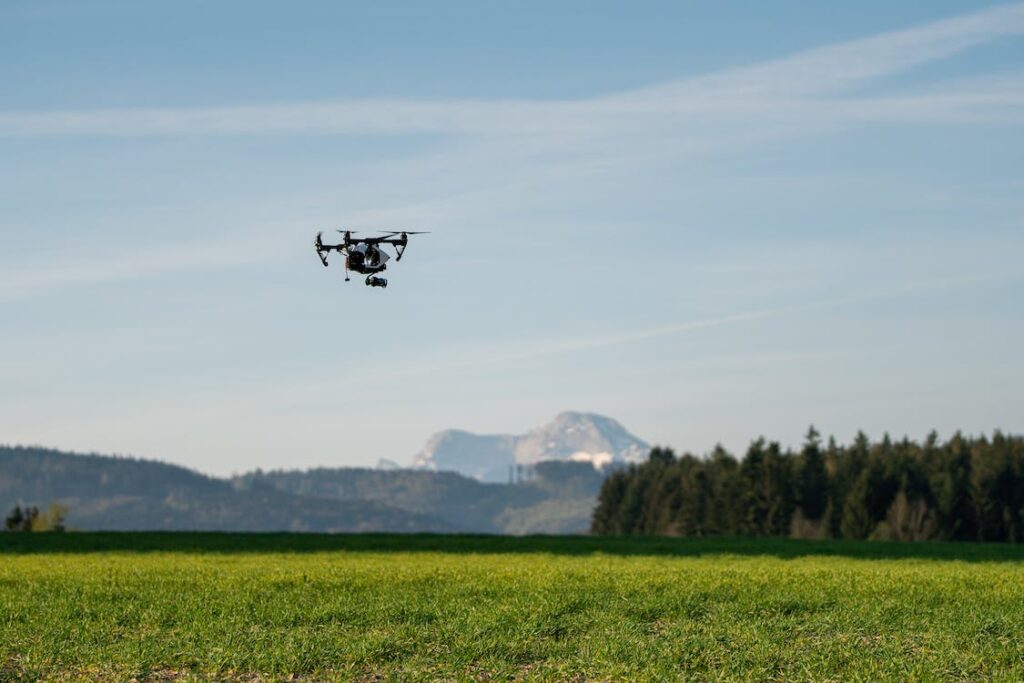India, a land known for its rich cultural heritage and ancient wisdom, has emerged as a vibrant hub for scientific and technological advancements. Its history has a diverse knowledge of technological advancements that most of us are unaware of.
In this article, you are going to explore more about the growth of science and technology in India. Let us start our journey.
Definition Of Science And Technology
Science is a systematic and organized approach to acquiring knowledge about the natural world through observation, experimentation, and analysis. It involves the formulation and testing of hypotheses and the development of theories and laws based on empirical evidence. Science seeks to understand the underlying principles and mechanisms that govern various phenomena and events, aiming to provide explanations and predictions about the natural world.
Technology, on the other hand, refers to the application of scientific knowledge for practical purposes. It involves the development, production, and use of tools, techniques, machines, materials, and processes to solve problems, meet human needs, and improve efficiency in various fields. Technology often builds upon scientific discoveries and findings, utilizing them to create innovative solutions, products, and services that benefit society.
History Of Science And Technology In India
The history of science and technology in India dates back several millennia and has witnessed significant developments and contributions across various periods. Here’s an overview of Indian science and technology history, covering the early beginnings, pre-British era, and the British era.
Early Beginnings
India has a rich scientific heritage that can be traced back to ancient times. The Indus Valley Civilization (2600-1900 BCE) showcased remarkable urban planning, sanitation systems, and the use of standardized weights and measures. The Vedas, ancient Indian texts (1500-500 BCE), contain references to astronomy, mathematics, medicine, and metallurgy.
Pre-British Era
During the classical period, from around 500 BCE to 500 CE, several scientific advancements took place in India. Mathematicians like Aryabhata and Brahmagupta made significant contributions to the fields of algebra, arithmetic, and trigonometry. Aryabhata proposed the concept of zero and the decimal system. Indian astronomers made notable discoveries in celestial observations and calculated the Earth’s circumference.
British Era
With the arrival of the British in the 17th century, India’s scientific and technological progress faced challenges and underwent significant changes. The British East India Company established educational institutions like the Calcutta Madrasa (1781) and the Hindu College (1817) to promote Western scientific education.
Despite the British influence, Indian scientists continued to make notable contributions. Jagadish Chandra Bose, a physicist, botanist, and inventor, pioneered research on wireless telegraphy, demonstrating the similarity between animal and plant tissues’ electrical responses. He is often regarded as one of the fathers of radio science.
Scientific Temper Throughout History
Scientific temper refers to the attitude and mindset that encourages a rational, evidence-based approach to understanding the world and making decisions. While the concept of scientific temper emerged more prominently in the 20th century, we can observe instances of scientific temper throughout history. Here’s an overview of scientific temper throughout different periods:
Ancient Civilizations
Several ancient civilizations, such as the Indus Valley Civilization, Mesopotamia, Egypt, and Greece, demonstrated elements of scientific temper. They observed and studied the natural world, developed mathematical systems, and made significant advancements in fields like astronomy, medicine, and engineering. Scholars like Pythagoras, Aristotle, and Archimedes exhibited rational and systematic approaches to understanding various phenomena.
Islamic Golden Age
During the Islamic Golden Age (8th to 14th centuries), scientific temper was prominent in the Muslim world. Scholars like Al-Kindi, Al-Razi, and Ibn Sina (Avicenna) pursued scientific inquiry, emphasized empirical observation, and translated and preserved classical works of ancient Greece and Rome. They made contributions to fields such as medicine, mathematics, optics, and astronomy.
Scientific Revolution
The Scientific Revolution of the 16th to 18th centuries further solidified the importance of scientific temper. The works of scientists like Copernicus, Galileo, and Newton challenged the prevailing beliefs of the time, leading to a paradigm shift in understanding the natural world. The scientific method, emphasizing empirical evidence, experimentation, and systematic observation, became a cornerstone of scientific inquiry.
Modern Era
In the 19th and 20th centuries, scientific temper gained more prominence with the establishment of scientific institutions, universities, and research centers worldwide. The Industrial Revolution brought about advancements in technology and increased the demand for scientific knowledge. Scientists like Charles Darwin, Marie Curie, Albert Einstein, and many others exemplified scientific temper by pushing the boundaries of knowledge through rigorous experimentation, observation, and critical thinking.
Indigenous Technology Development Of India
India has a long history of indigenous technology development, with significant contributions made in various fields. Here are some notable examples of indigenous technology development in India
Ayurveda
Ayurveda, the traditional Indian system of medicine, has a history spanning thousands of years. It encompasses a holistic approach to health, focusing on natural remedies, herbs, and lifestyle practices. Ayurveda has made substantial contributions to fields like pharmacology, surgery, and wellness practices.

Yoga
Yoga, originating in ancient India, is a system of physical, mental, and spiritual practices. It emphasizes physical postures (asanas), breathing techniques (pranayama), and meditation. Yoga has gained global recognition and is practiced for its health benefits and stress reduction.

Agriculture
India has developed several indigenous agricultural practices suited to its diverse climatic conditions. Techniques like crop rotation, intercropping, organic farming, and traditional irrigation systems like the stepwell (baori) and qanat have been practiced for centuries.

Space Technology
India’s space program, led by the Indian Space Research Organisation (ISRO), has achieved significant milestones in indigenous technology development. ISRO has successfully launched satellites, including the Mars Orbiter Mission (MOM), Chandrayaan-1, and Chandrayaan-2. The development of the Polar Satellite Launch Vehicle (PSLV) and the Geosynchronous Satellite Launch Vehicle (GSLV) are examples of indigenous rocket technology.

Promotion Of Science And Technology In India
The promotion of science and technology in India has been a priority for the government and various organizations. Efforts have been made to foster a conducive environment for research, innovation, and technological advancements. Here are some key initiatives and measures undertaken to promote science and technology in India:
Research And Development (R&D) Institutions
India has established numerous research institutions, such as the Indian Institutes of Technology (IITs), Indian Institutes of Science Education and Research (IISERs), Council of Scientific and Industrial Research (CSIR) laboratories, and the Indian Council of Medical Research (ICMR). These institutions provide a platform for conducting cutting-edge research across various disciplines.
Science And Technology Policy
The government of India has formulated policies to promote science and technology. The Science, Technology, and Innovation Policy (STIP) outlines the country’s vision and goals for science and technology development. It focuses on enhancing R&D funding, promoting innovation ecosystems, and fostering collaborations between academia, industry, and government.
Science Education And Skill Development
Efforts have been made to enhance science education and skill development in India. Initiatives like the Rashtriya Avishkar Abhiyan (RAA) promote hands-on science learning in schools. Scholarships, fellowships, and training programs are provided to students pursuing higher education in science and technology disciplines.
Technology Incubation And Startup Support
The government has established technology incubators and startup support mechanisms to nurture innovative ideas and facilitate their commercialization. Initiatives like Atal Innovation Mission (AIM) and Startup India provide mentorship, funding, and networking opportunities to promote entrepreneurship in the science and technology sector.
Science Education In India Today
Science education in India today is a critical area of focus to develop a scientifically literate society and nurture a future generation of scientists and innovators. Here are some key aspects of science education in India:
School Curriculum
Science education is a core component of the school curriculum in India. Science subjects, including physics, chemistry, biology, and sometimes computer science, are taught from the primary level through secondary and higher secondary levels. The curriculum aims to provide a foundation of scientific knowledge, principles, and concepts.
Science Fairs And Exhibitions
Science fairs and exhibitions are organized at various levels, from school to national levels, to showcase student projects and innovations. These events provide a platform for students to demonstrate their scientific knowledge, creativity, and problem-solving abilities. Science fairs also promote scientific inquiry and foster a spirit of curiosity and exploration.
Science Education Initiatives
The government and various organizations have launched science education initiatives to enhance the quality of science education. For example, the National Council of Educational Research and Training (NCERT) develops science textbooks and teaching materials, and the National Innovation Foundation (NIF) supports grassroots innovations and science education in rural areas.
Five-Year Plans For Economic Development Of India’s Science And Technology Sector
India has implemented a series of Five-Year Plans to drive economic development, including the growth and advancement of the science and technology sector. These plans outline specific goals, strategies, and targets for the development of science, technology, and innovation in the country. Here is an overview of the Five-Year Plans concerning the science and technology sector in India:
First Five-Year Plan (1951-1956)
The First Five-Year Plan laid the foundation for scientific and technological development in independent India. It recognized the importance of science and technology for economic growth and set the objective of building scientific infrastructure. The plan focused on the establishment of research institutions, setting up scientific laboratories, and promoting scientific education.
Second Five-Year Plan (1956-1961)
The Second Five-Year Plan emphasized the need for technological self-reliance and aimed to strengthen the indigenous technological base. It focused on developing industries that could contribute to the country’s economic growth and reduce dependence on imports. The plan emphasized the establishment of engineering industries, the modernization of agriculture, and the growth of technical education.
Third Five-Year Plan (1961-1966)
The Third Five-Year Plan aimed to integrate science and technology into the industrial and agricultural sectors. It emphasized the development of research and development institutions, technology transfer, and the modernization of industries. The plan focused on the use of science and technology to address agriculture-related challenges and improve productivity.
Fourth Five-Year Plan (1969-1974)
The Fourth Five-Year Plan recognized the need for self-reliance and self-sufficiency in science and technology. It aimed to strengthen the scientific and technological infrastructure by setting up new research institutions, expanding the network of laboratories, and promoting collaboration between academia, industry, and government. The plan also focused on developing indigenous technologies in critical sectors such as defense and space.
Fifth Five-Year Plan (1974-1979)
The Fifth Five-Year Plan emphasized technology-led development and sought to reduce the technology gap with advanced nations. It focused on the development of high-tech industries, the modernization of existing industries, and the promotion of research and development. The plan also emphasized the need for skill development and vocational training to support technological advancements.
Since then, the planning process in India has transitioned from Five-Year Plans to long-term development strategies. However, the government continues to implement policies, schemes, and initiatives to promote science and technology. These include programs like the Technology Development Board, Scientific and Industrial Research Organizations (SIROs), and various funding schemes to support research and innovation.
Contributions From Indian Scientists
Indian scientists have made significant contributions in various fields of science and technology, both in India and on the global stage. Here are some notable contributions from Indian scientists:
Sir Jagadish Chandra Bose
A physicist, biologist, and inventor, Sir Jagadish Chandra Bose made groundbreaking contributions to the field of wireless communication. He developed a wireless telegraphy system and demonstrated the similarity between animal and plant tissues’ electrical responses. His work laid the foundation for the development of radio science.
Dr. Homi J. Bhabha
Known as the father of India’s nuclear program, Dr. Homi J. Bhabha played a crucial role in establishing India’s Atomic Energy Commission. He made significant contributions to nuclear physics, particularly in the study of cosmic rays and the development of nuclear reactors. His vision led to the establishment of the Tata Institute of Fundamental Research (TIFR), which became a leading center for scientific research.
Dr. C.V. Raman
Dr. C.V. Raman was a Nobel laureate physicist known for the discovery of the Raman Effect. This effect demonstrated the scattering of light and provided insights into the behavior of molecules. Raman’s work paved the way for the development of Raman spectroscopy, which is widely used in scientific research and various industries.
Dr. A.P.J. Abdul Kalam
A renowned aerospace scientist and the 11th President of India, Dr. A.P.J. Abdul Kalam played a vital role in the development of India’s missile and space programs. He was a key contributor to the development of India’s first satellite launch vehicle, SLV-III, and the successful Pokhran-II nuclear tests. Dr. Kalam was known for his efforts to promote science education and inspire the younger generation.
Dr. Srinivasa Ramanujan
Regarded as one of the greatest mathematicians of the 20th century, Dr. Srinivasa Ramanujan made significant contributions to number theory, mathematical analysis, and infinite series. His work in mathematics, despite a lack of formal training, led to numerous groundbreaking theorems and formulas.
Conclusion
Science and technology in India have emerged as key drivers of the country’s progress and development. With a rich history of scientific contributions and a growing focus on innovation, India is rapidly transforming into a global hub for scientific research, technological advancements, and entrepreneurial endeavors. With an ever-growing pool of talented scientists, engineers, and innovators, India’s future in science and technology holds immense promise.
Exclusive Scientific Content Created By Scientists
If you are a scientist looking for scientific content online, Mind the Graph is the place you need to hang up. The platform helps you find exclusive scientific content created by scientists in the form of figures, charts, and infographics and makes your research work simpler. Sign Up now to learn more.

Subscribe to our newsletter
Exclusive high quality content about effective visual
communication in science.





